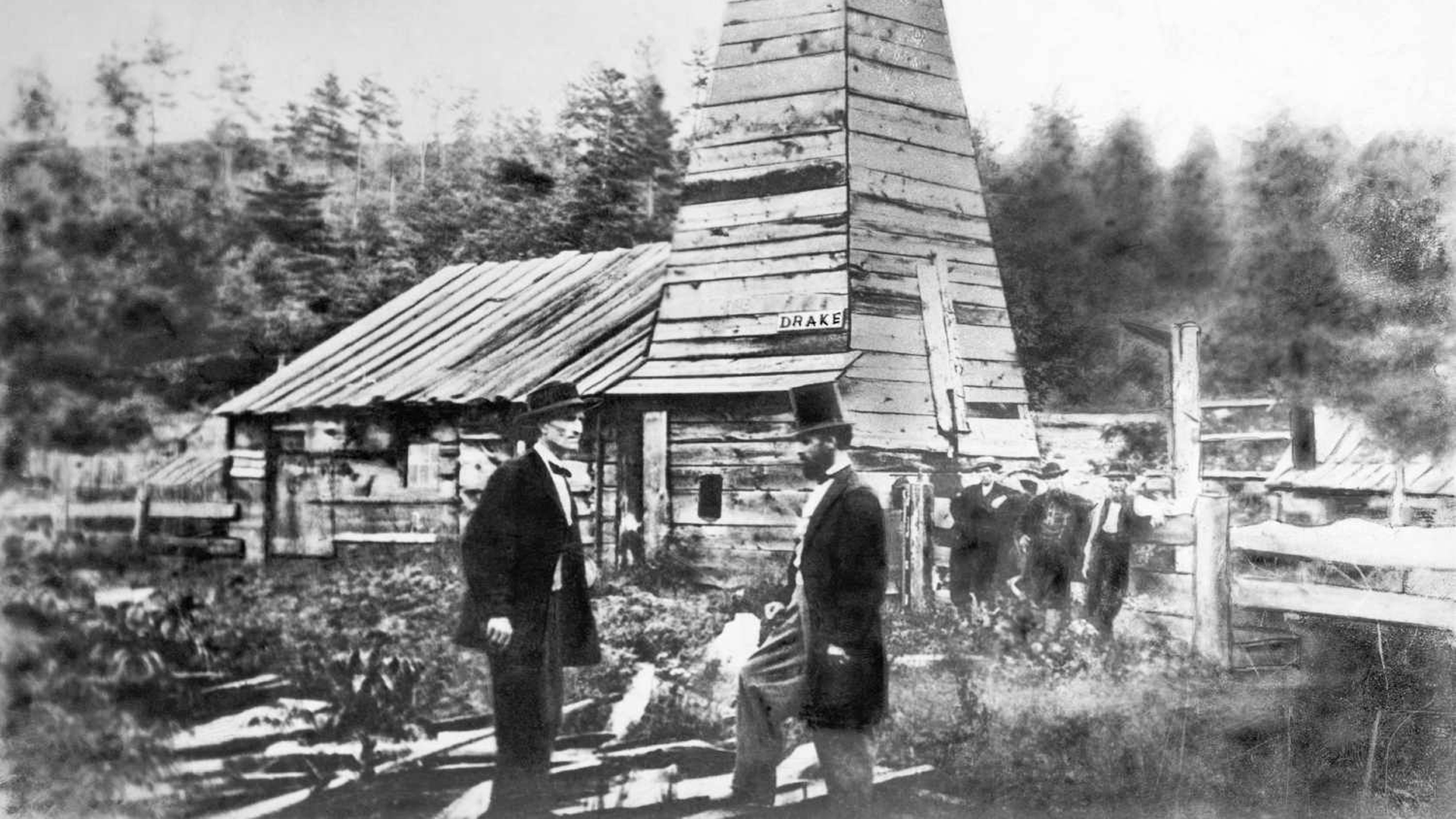First Successful Oil Well Drilled in Pennsylvania

Illustration of Edwin Drake’s first oil well in Titusville, Pennsylvania, 1859.
What Happened?
Before 1859, oil was collected in small amounts from surface seeps and sold for limited uses, such as medicine or lubrication. But George Bissell and Jonathan Greenleaf Eveleth believed crude 'rock oil' could be refined into a brighter, cheaper lamp fuel than whale oil or coal oil. They enlisted Yale chemist Benjamin Silliman Jr., whose 1855 report showed petroleum could be distilled into an illuminant far superior to existing fuels.
Armed with science and investment, the Pennsylvania Rock Oil Company—later renamed Seneca Oil—sent Edwin L. Drake to Titusville to try drilling for oil using salt-well technology. Locals mocked the effort as 'Drake’s Folly,' but on August 27, 1859, the well struck oil at a depth of 69 feet, producing about 20 barrels a day. It was the birth of the petroleum industry.
The discovery triggered an oil rush in Pennsylvania’s Oil Creek Valley, transforming the quiet countryside into a boomtown of derricks, speculators, and entrepreneurs. Within two years, thousands of wells were drilled and oil prices fluctuated wildly. The innovation also laid the groundwork for the rise of industrial giants, most famously John D. Rockefeller, who would build Standard Oil into one of the most powerful corporations in history.
Drake himself never became wealthy—he failed to patent his drilling method and lived much of his later life in poverty. Yet his well proved that petroleum could be extracted on a large scale, fueling not only lamps but also the engines and industries of the coming machine age.
The legacy of Drake’s well is double-edged: it made possible the growth of modern economies, transportation, and technology, but it also bound the world to fossil fuels, ushering in both prosperity and the long-term challenge of climate change. The well in Titusville still stands today as a historic landmark, a reminder of how one small strike reshaped global history.
Why It Matters
Drake’s 1859 well marked the dawn of the petroleum age, reshaping how humans powered light, machines, and entire economies. It launched the oil industry that fueled industrialization, wars, and global trade. But it also locked humanity into a fossil-fuel future that now drives climate change. The Drake Well is both a symbol of innovation and a cautionary marker of how energy choices can shape—and imperil—the future.
?
Why did some people call Drake’s project 'Drake’s Folly' before it succeeded?
How did Benjamin Silliman Jr.’s report influence the development of the petroleum industry?
In what ways did the Titusville oil strike transform Pennsylvania and the U.S. economy?
Why did Edwin Drake himself not profit from his groundbreaking discovery?
How does the legacy of Drake’s well connect to today’s climate crisis?
Dig Deeper
The Drake Well Museum tells the story of the diverse people who came to Pennsylvania to seek their fortune in the oil industry.
Stephanie Honchell Smith exposes the oil industry’s decades-long campaign to discredit climate science about fossil fuels.
Exploring the world’s reliance on oil, the dangers of depletion, and the urgent need for a shift toward sustainable energy.
Related

Climate Science: How Our Planet Keeps Its Cool… and Why It’s Getting Hotter
Climate science helps us understand how the planet stays warm, why it's getting warmer, and what we can do about it.

Powering the Future: Energy and Renewable Solutions
From sunbeams to spinning turbines, renewable energy is shaping our planet’s future. Learn how energy works, where it comes from, and how engineers are helping build a cleaner, brighter tomorrow.
Reading the Sky: How We Measure Weather and Why It Matters
Weather isn’t just a conversation starter, it’s data, science, and survival. Tracking the atmosphere gives us clues to the future, insight into climate, and the power to make informed decisions.
Further Reading
Stay curious!